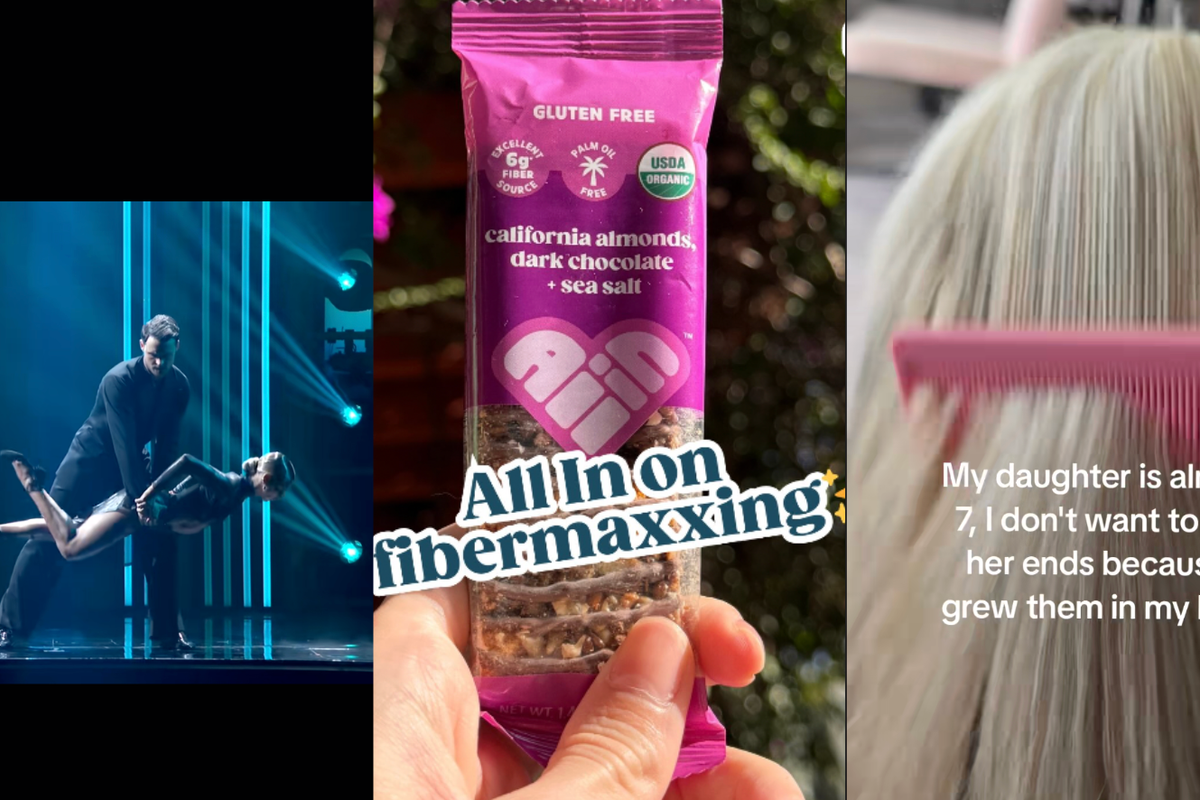People who are 'good at flirting' are sharing the clues that tell if someone likes you
Here are 15 great tips.

Are they flirting with me or just being nice?
Most of the time it’s tough to know if someone is flirting with you because they have to be subtle. They can’t be too obvious because if the feeling isn’t mutual it can be pretty embarrassing. It’s also tough to detect if someone is flirting because most of the time it’s someone you don’t know very well. Do they like me or are they normally friendly?
It hurts to imagine the number of times we’ve all missed signals that someone was interested in us and a potentially wonderful romance never happened. However, studies show that it happens more often than not.
A study on heterosexuals published in Psychology Today found that women were only 18% accurate in recognizing men’s flirting, while 36% of men were accurate about women's flirting. However, we’re really good at knowing when people aren’t flirting with us.
In the same study, women were 83% accurate in seeing friendliness as just friendliness, and men performed about the same at 84% accuracy.
Jeffery Hall, an assistant professor of communication studies at the University of Kansas in Lawrence, says there are five main styles of flirting: physical, traditional, polite, sincere, and playful.
Physical flirting involves “communicating sexual interest” to a potential partner. Traditional flirting is a tactic primarily used by introverts, where men tend to take the lead and women assume a passive role. Polite flirting involves the use of “proper manners” and is a cautious way of showing you like someone.
Sincere flirting involves telling the person you’re interested, and playful flirts like joking around but their efforts rarely turn into substantial relationships.
A Reddit user, who has since deleted their profile, asked a great question on the AskReddit subforum that should be a big help to those who have a hard time spotting flirtation. They asked, "People who are good at flirting, what are some social cues us oblivious people should watch out for?"
A large number of people who responded to the thread gave practical advice on the behaviors that are a giveaway that someone is flirting. The most popular responses are eye contact and laughing at your jokes, even if they aren’t funny.
Here are 15 of our favorite social cues that show someone is interested.
1. The dance of plausible deniability.
"Everyone is giving good advice, but flirting didn't click for me until i heard it described not as a set of behaviors to look out for, but as an escalation of suggestive behaviors couched in plausible deniability.
"Put practically, if someone is doing something to engage you that feels extra (lots of touching, looking at you in a way that feels a bit to long, or doing a lot of poking fun and complimenting you), then that might be flirting or it might not. That's the whole point. Plausible deniability. They can safely disengage at any time.
"If you want to know if someone's flirting, you need to test it. You do that by escalating things, but just a bit, so that now you have plausible deniability (touch them back in a comfortable way, maintain eye contact, or joke-compliment them back). If they escalate back and continue to do so as you escalate in turn, that is flirting. Eventually one of you will break cover and do something with clear intent (a kiss, an approach + ask for a number, or straight up telling them what you think of them and that you're interested). Otherwise, if you escalate and they don't change their behavior or they back off, then they were probably just being friendly and you should take the hint and do the same.
"Dunno if that's something obvious to people, but it was definitely not for me, and college parties would have been way less fun had i not known. Hopefully this can help someone else too :)" – three_furballs
2. Give 'em a chance to be alone.
"If you're in a group of friends (new or old), find a natural opportunity to hang back. Someone who's interested in you will notice and take the opportunity to talk to you in private. Now this isn't full [fool] proof but it'll at least give you the opportunity to feel for any chemistry between you." – Kagamid
3. Conversation should be two-sided.
"Be wary of a one-sided conversation. If your responses are met with mostly "yeps" and "uh huh" and nothing without meat, its probably not going well." – ViciousKnids
4. Ignoring their friend.
"If they look directly at you while talking to their friend it's a good sign." – yassis_bru
5. The reaction shot.
"I read once that if someone looks at you after someone (doesn't have to be you) said something funny and everyone is laughing, they like you. From personal experience, it's true." – luv_sicK
6. Lots of eye contact.
"They make a lot of eye contact. They are interested in what you have to say and ask you lots of questions. They laugh at your jokes, even the lame ones. They initiate physical contact. They try to find space where you can talk more privately (this does not always mean sex but it often means they wish for more quality time with you)." – TheSurfingRaichu
7. Trust then test.
"In my experience, almost everyone can get a sense that someone is into them, but most people second guess themselves until they convince themselves it's nothing. I say trust that sense. It's based off all of these factors that we pick up consciously and subconsciously, and almost always it's not a coincidence.
"When you think someone likes you, you can test that theory in a few ways. A subtle but effective example is inviting them to something you know they can't or don't want to attend. If they express interest in rescheduling or finding some other way to spend time with you, they like you. Otherwise they'll just say no, sorry I can't make it ... Of course, you could also just ask. In my experience anyone worth getting intimate with is mature enough to deal with that question." – MildlyWyld
8. Mirroring.
"Does their body turn toward you or away from you when you talk? Do they mirror your body language?" – Perfect_Draw516
9. They touch you.
"Physical contact. Granted, not everyone flirts the same way but a good sign is if they touch your arm (or the like) or you find them smiling the whole time that you’re talking to them." – Cosmic_Marman
10. Special eye contact.
"When you're in a public space, the direct eye contact (for a beat or two too long) and the look away. One of my go-to moves that always yielded results." – LuLu42
11. Bad jokes.
"Seriously tell a bad joke - look for laughter and smiles that should not be there but are. Then it’s you they are into, definitely not what you said." – YukonBrawler
12. Facial gestures.
"According to Sherlock: licking lips, eyes cast down towards the other persons lips, quirky smile of the lips, dilated eyes. And if the person has long hair, tucking it behind their ear or other fidgety behavior." – fandomfangirl1
13. Mimicking body language.
"In the case of someone who likes you, while interacting, watch for repetitious patterns and mimic their body language. Eventually, if you cross your arms and the person whose attention you are seeking does the same, for example, you can rely on that being a good sign." – flungkle
14. Little adjustment.
"I've noticed that women will do a little adjustment to you, like brushing off a little piece of lint off your lapel or moving a stray hair off your face while talking to you. At least they did back in my rogue days." – robfrankel1
15. Take your shot.
"If you're at a bar and a woman makes eye contact for more than a second without looking away, shoot your shot." – sle7in360
There you have it! If you're picking up any of these signs, it might mean you can go ahead and shoot your shot (respectfully!). Good luck out there!
This article originally appeared three years ago.
- Gay men gave straight guys relationship advice and they'd be dumb ... ›
- Emily Ratajkowski explains why women love Pete Davidson ... ›
- A 5th-grader wrote 7 rules for talking to girls — but grown-ups could ... ›
- New study shows how to flirt - Upworthy ›
- New study shows how to flirt - Upworthy ›
- New study shows how to flirt - Upworthy ›
- Women give men 13 flirting tips - Upworthy ›
- Flirting doesn't come naturally to everyone. So, here, self-proclaimed flirting experts are sharing their best tips for people who are shy. The big takeaway is to have fun, eliminate expectations, and make the other person laugh. Sounds easy, right? - Upworthy ›
- A study found this flirting strategy to be the most effective, regardless of your looks or age - Upworthy ›
- Woman wonders if men over 30 get hit on more often and gets a funny reality check - Upworthy ›





 "You're hilariously brilliant at everything you hate."
"You're hilariously brilliant at everything you hate."  "Bridget is authentically herself…and triumphs in her own way."
"Bridget is authentically herself…and triumphs in her own way."  "They're written in some curious language that I can't really understand."
"They're written in some curious language that I can't really understand." 
 Beaver on riverbank.
Beaver on riverbank.  Pbs Nature Swimming GIF by Nature on PBS
Pbs Nature Swimming GIF by Nature on PBS  An actual beaver dam on the now-thriving Price River
An actual beaver dam on the now-thriving Price River 
 Wash the dishes before I get home from bowling! Photo by
Wash the dishes before I get home from bowling! Photo by  music video 80s GIF
music video 80s GIF 
 An embarrassed woman covers her face
An embarrassed woman covers her face A woman laughs while trying to hide her face from the cameraCanva
A woman laughs while trying to hide her face from the cameraCanva Green Flag GIF by The Last Talk Show
Green Flag GIF by The Last Talk Show A woman covers her faceCanva
A woman covers her faceCanva